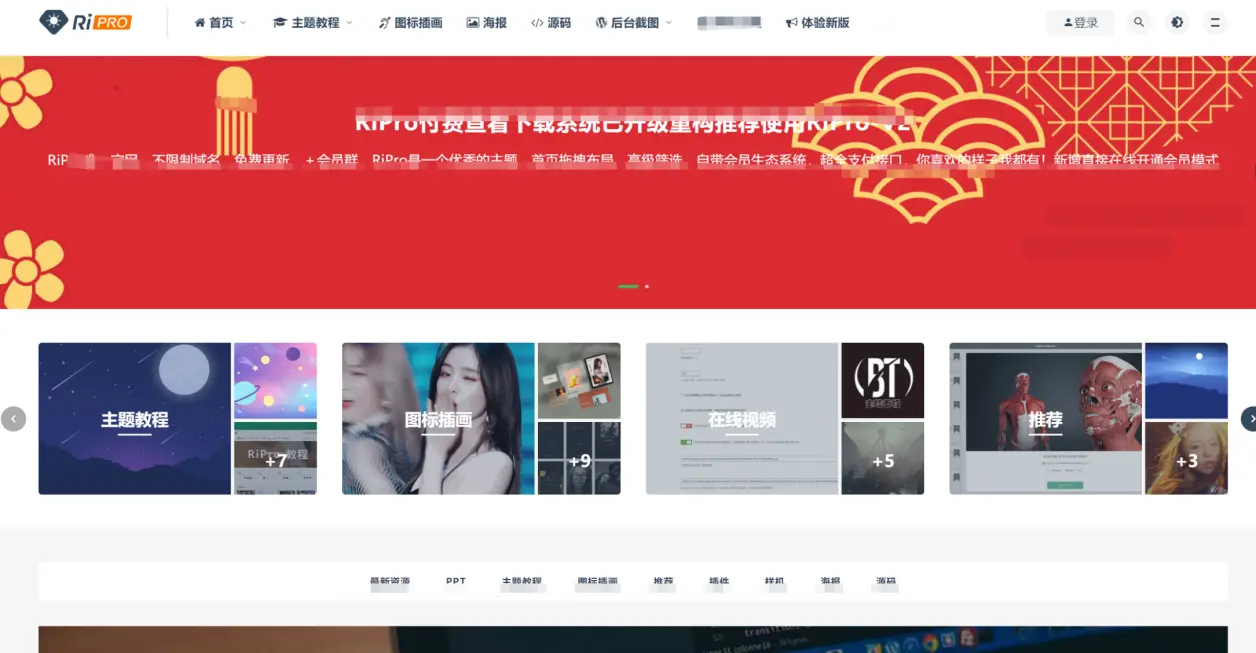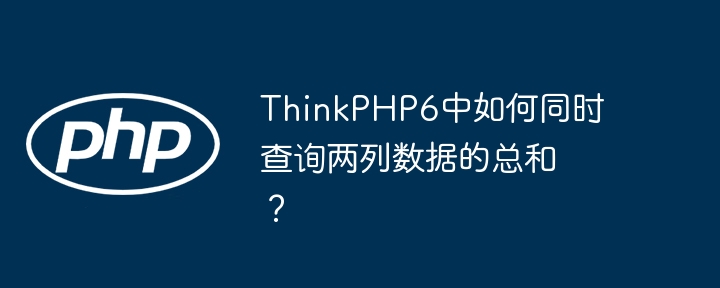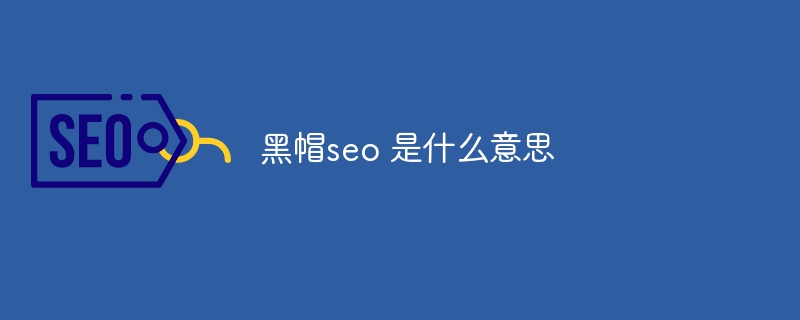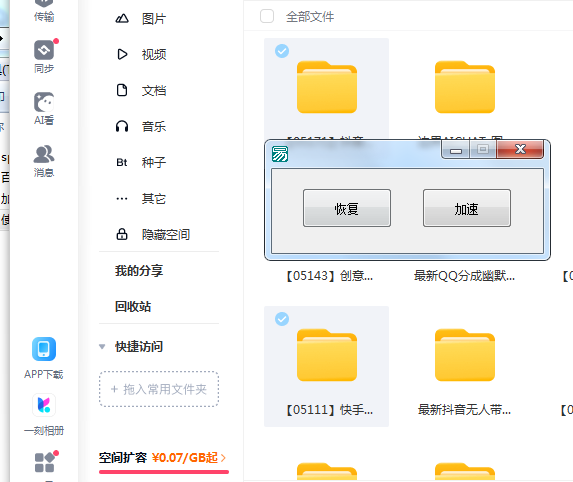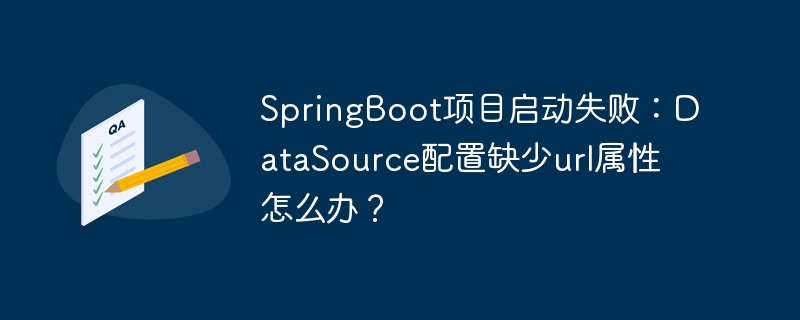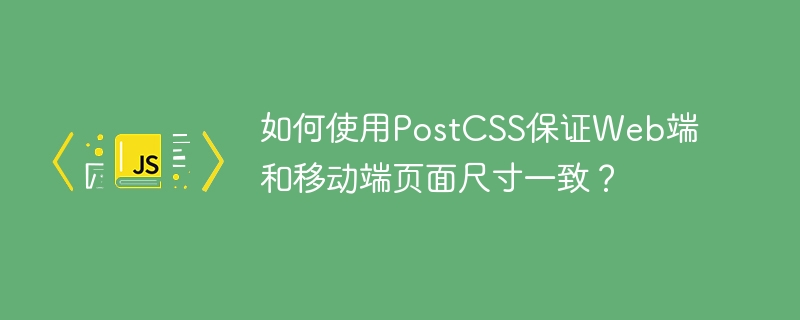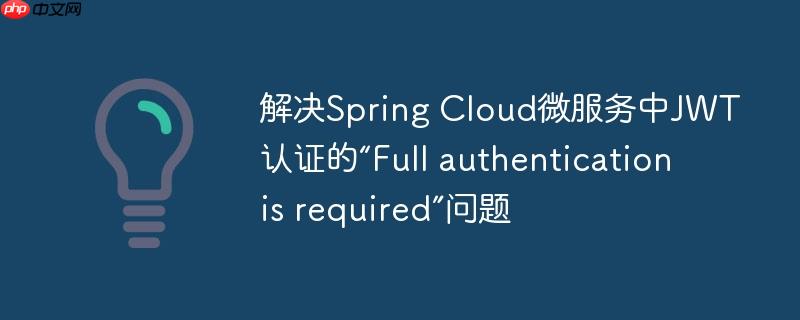
本文探讨了在spring Cloud微服务架构中,使用JWT和API网关时,注册/登录等公共接口出现“Full authentication is required”错误的问题。核心解决方案在于正确配置spring security,通过permitAll()方法明确放行无需认证的端点,确保API网关能成功转发请求并处理用户认证流程,从而解决用户注册和登录时的认证障碍。
问题剖析:spring cloud微服务认证常见挑战
在基于spring cloud的微服务架构中,通常会采用jwt(json web Token)进行用户认证和授权,并通过api gateway作为统一入口。然而,开发者在实现用户注册(signup)和登录(login)等无需认证即可访问的公共接口时,常会遇到“full authentication is required to access this Resource”的错误。这通常发生在auth service内部直接请求这些接口,或通过api gateway转发请求时。同时,通过api gateway访问时,可能会出现“could not send request”的连接错误,这往往是上游服务(auth service)因认证问题拒绝请求,导致网关无法获取响应。
出现此问题的原因在于Spring Security的默认行为。在没有明确配置的情况下,Spring Security会默认保护所有端点,要求所有请求都进行认证。对于用户注册和登录这类用于获取认证凭证的接口,它们本身就应该在用户未认证状态下访问,因此需要特殊处理。
核心解决方案:Spring Security配置
解决此问题的关键在于正确配置Auth Service中的Spring Security,明确指定哪些路径可以无需认证即可访问。这通常通过在安全配置类中,使用httpSecurity的authorizeRequests()和permitAll()方法来实现。
以下是修正后的Spring Security配置示例:
import org.springframework.context.annotation.Configuration; import org.springframework.security.config.annotation.web.builders.HttpSecurity; import org.springframework.security.config.annotation.web.configuration.EnableWebSecurity; import org.springframework.security.config.annotation.web.configuration.WebSecurityConfigurerAdapter; @Configuration @EnableWebSecurity public class WebSecurityConfig extends WebSecurityConfigurerAdapter { @Override protected void configure(HttpSecurity http) throws Exception { http .csrf().disable() // 禁用CSRF,因为JWT是无状态的 .authorizeRequests(auth -> { // 定义公共访问路径 auth.antMatchers("/authenticate/signup", "/authenticate/login", "/authenticate/refreshtoken").permitAll(); // 其他所有请求都需要认证 auth.anyRequest().authenticated(); }) // 可以根据需要添加JWT过滤器等 // .addFilterBefore(jwtRequestFilter, UsernamePasswordAuthenticationFilter.class) ; } }
代码解析:
- http.csrf().disable(): 禁用CSRF(Cross-Site Request Forgery)保护。对于使用JWT的无状态API,通常不需要CSRF保护,因为JWT本身包含了认证信息,并且不会使用基于会话的CSRF令牌。
- authorizeRequests(auth -> { … }): 这是配置请求授权规则的核心部分。
- auth.antMatchers(“/authenticate/signup”, “/authenticate/login”, “/authenticate/refreshtoken”).permitAll(): 这是解决问题的关键。它明确指定了/authenticate/signup(注册)、/authenticate/login(登录)和/authenticate/refreshtoken(刷新令牌)这几个路径可以被所有用户(包括未认证用户)访问。permitAll()方法表示允许所有请求访问这些路径,无需任何认证或授权。
- auth.anyRequest().authenticated(): 在放行了特定公共路径之后,此规则确保了其余所有未明确放行的请求都必须经过认证才能访问。这是微服务安全性的基本要求。
通过上述配置,Auth Service将允许对/authenticate/signup、/authenticate/login和/authenticate/refreshtoken的请求无需认证即可通过,从而解决了“Full authentication is required”的错误。API Gateway在转发这些请求时,也能成功收到来自Auth Service的响应,避免了“Could not send request”的问题。
注意事项与最佳实践
-
WebSecurityConfigurerAdapter的替代方案: Spring Security在5.7.0版本之后,官方推荐使用基于组件的方式配置安全,而不是继承WebSecurityConfigurerAdapter。虽然上述代码仍然有效,但为了遵循最新最佳实践,建议采用以下函数式配置方式:
import org.springframework.context.annotation.Bean; import org.springframework.context.annotation.Configuration; import org.springframework.security.config.annotation.web.builders.HttpSecurity; import org.springframework.security.web.SecurityFilterChain; @Configuration public class WebSecurityConfig { @Bean public SecurityFilterChain filterChain(HttpSecurity http) throws Exception { http .csrf(csrf -> csrf.disable()) // 禁用CSRF .authorizeHttpRequests(auth -> auth .requestMatchers("/authenticate/signup", "/authenticate/login", "/authenticate/refreshtoken").permitAll() .anyRequest().authenticated() ); // 可以根据需要添加JWT过滤器等 // .addFilterBefore(jwtRequestFilter, UsernamePasswordAuthenticationFilter.class); return http.build(); } }
这种方式更加灵活,且符合Spring Security的未来发展方向。更多详情可参考Spring官方博客:Spring Security without the WebSecurityConfigurerAdapter。
-
API Gateway与服务间协作: API Gateway作为请求的入口,其作用是路由和转发。当Auth Service正确配置了公共访问路径后,API Gateway就可以顺利将请求转发至这些端点。在实际生产环境中,API Gateway通常还会承担额外的安全职责,例如:
- 限流: 防止恶意请求或ddos攻击。
- 日志记录: 记录所有进出系统的请求。
- 初步认证/授权: 对于需要认证的请求,API Gateway可以进行初步的JWT验证,甚至直接处理一部分授权逻辑,减轻后端服务的负担。
总结
在Spring Cloud微服务架构中,正确配置Spring Security是确保系统安全和功能正常运行的关键。对于用户注册、登录等公共认证接口,务必使用permitAll()方法明确放行,以避免“Full authentication is required”的错误,并确保API Gateway能够顺畅地转发请求。同时,关注Spring Security的最新推荐配置方式,采用函数式配置,可以使代码更现代化、易于维护,从而构建健壮、高效的微服务系统。






